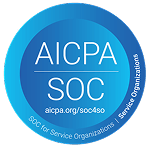FAQs
 What Pakistan-specific scholarships and funding sources are available for students studying in the U.S.?
What Pakistan-specific scholarships and funding sources are available for students studying in the U.S.?
Pakistani students have several country-specific funding options, including the Fulbright Scholarship Program administered by USEFP, which funds approximately 200 Pakistani students annually for U.S. master’s and Ph.D. programmes. The HEC Overseas Scholarship Programme offers financial support of up to US$50,000 (PKR 14,315,000) for Pakistani students pursuing graduate degrees in STEM fields at top U.S. universities. The Aga Khan Foundation International Scholarship Programme provides funding for Pakistani students predominantly from Northern Pakistan and other specific regions. Additionally, the USAID-funded Merit and Needs-Based Scholarship Programme supports undergraduate and graduate education in fields critical to Pakistan’s development. Major Pakistani corporations like HBL, UBL and Engro also offer competitive scholarship programmes for Pakistani nationals studying abroad in fields relevant to their business sectors.
 How does Pakistan’s foreign exchange policy affect funding for U.S. education costs?
How does Pakistan’s foreign exchange policy affect funding for U.S. education costs?
Pakistan’s foreign exchange regulations significantly impact education funding through the State Bank of Pakistan’s Student Exchange Remittance Card (SERC), which allows qualified students to remit up to US$70,000 (PKR 20,041,000) annually for verified education expenses. However, applicants must provide documented proof of admission and expense verification for each remittance. Recent currency depreciation has increased costs for Pakistani families by approximately 30-40% over the past two years, making budgeting more challenging. The State Bank also imposes annual documentation requirements, requiring students to submit progress reports and enrolment verification to maintain remittance eligibility. Banking channels like HBL, UBL and Meezan Bank offer specialised education remittance services with reduced fees, though transaction limits may apply. Pakistani students should maintain thorough documentation of all foreign exchange transactions for both Pakistan and U.S. tax compliance purposes.
 What are the unique financial aid application strategies for Pakistani students compared to other international applicants?
What are the unique financial aid application strategies for Pakistani students compared to other international applicants?
Pakistani students should highlight their academic achievements from recognised national institutions like the National University of Sciences and Technology, the Lahore University of Management Sciences or the University or the University of Engineering and Technology when applying for merit-based financial aid, as many U.S. universities recognise these as premier Pakistani institutions. Unlike applicants from some countries, Pakistani students should emphasise their English proficiency credentials, as strong TOEFL/IELTS scores can qualify them for additional language proficiency scholarships and teaching assistantships. When demonstrating financial need, Pakistani applicants should provide comprehensive documentation of family income, including property ownership certificates from local revenue departments and tax returns (FBR documentation), which U.S. institutions increasingly require from Pakistani applicants specifically. Pakistani students should also highlight their experience with development projects, social entrepreneurship initiatives or community service that addresses Pakistan’s national development goals, as many U.S. institutions offer specific funding for students from developing countries with demonstrated leadership potential.
 What are the most cost-effective pathways for Pakistani students to finance their U.S. education?
What are the most cost-effective pathways for Pakistani students to finance their U.S. education?
The most cost-effective pathway for Pakistani students typically involves combining multiple funding sources, beginning with applications to universities offering substantial financial aid to international students.Pakistani students should target STEM, business and health care programmes where teaching and research assistantships are more readily available. Many successful Pakistani students secure funding through external scholarships from organisations like the Fulbright Program, Aga Khan Foundation and discipline-specific scholarships before supplementing with student loans only as needed. This combined approach can reduce out-of-pocket expenses significantly compared to full-price tuition.
 How should Pakistani students approach loan repayment planning given the exchange rate fluctuations between the dollar and the Pakistani rupee?
How should Pakistani students approach loan repayment planning given the exchange rate fluctuations between the dollar and the Pakistani rupee?
Pakistani students should create a comprehensive loan repayment strategy that accounts for the historical depreciation of the rupee against the dollar (averaging 7-9% annually over the past decade). If returning to Pakistan after graduation, establish an emergency dollar-denominated savings fund equivalent to three to six months of loan payments as a buffer against currency fluctuations. Consider employment with multinational corporations operating in Pakistan, like Unilever, P&G or Nestle, that may offer dollar-indexed salaries or global mobility opportunities. Pakistani professionals often manage currency risk by making accelerated loan payments during periods of relative rupee stability or strength. Some returning graduates negotiate arrangements with family businesses to designate export earnings for loan repayments, avoiding currency conversion losses. For those with technical and professional degrees, explore remote work opportunities with U.S. companies that pay in dollars while living in Pakistan, providing the best of both worlds – earning in the loan currency while enjoying Pakistan’s lower cost of living.
